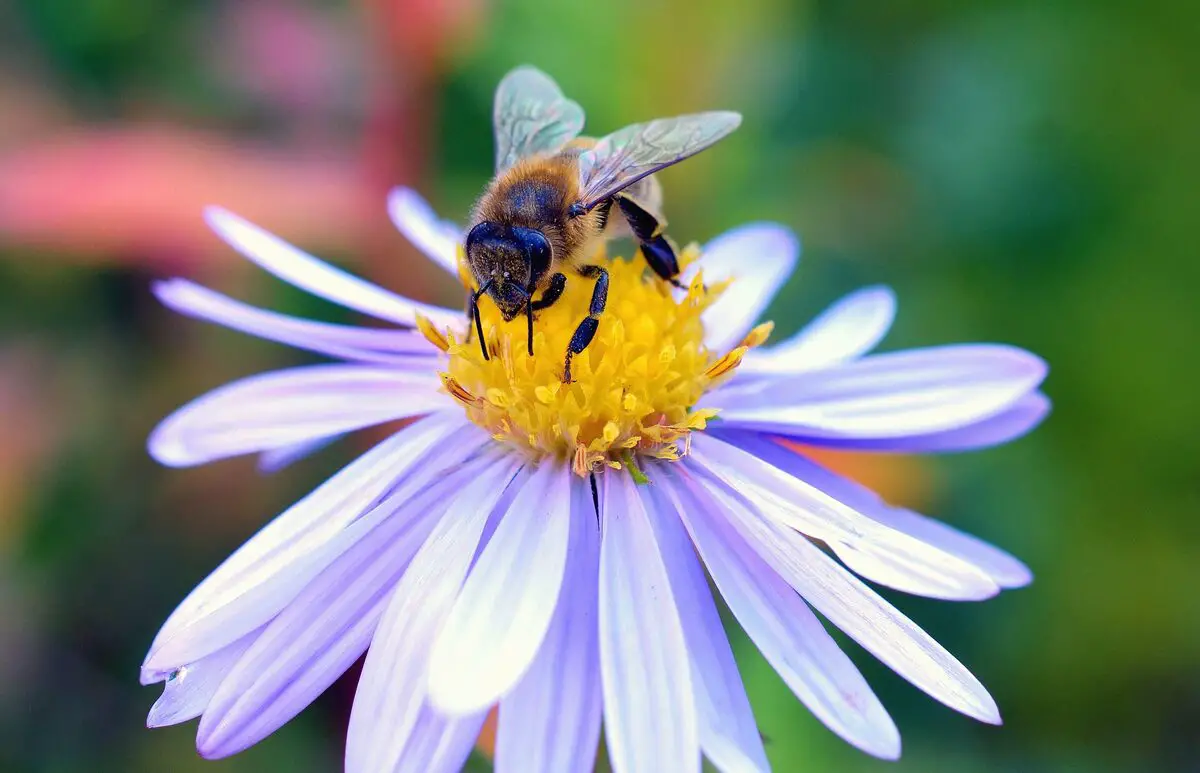
From the nectar of the flowers, a healthy food is produced that, in addition, can help us to strengthen our defense system: honey. Y there is a great variety of honey plantswhich is how those who have an interest in beekeeping are called, that is, for those who are dedicated to raising and caring for these wonderful insects in order to obtain the products they can collect.
Knowing their names will be very useful if you are interested in dedicating yourself to beekeeping. and produce honey, but also if what you want is, simply, to attract bees to your garden.
The importance of honey plants

Every self-respecting beekeeper has to know the plant species that can be interesting to produce honey. And also, you need to know the bees in your region and what to do to attract them. Both plants and animals are highly dependent on the climate, which is why it is very different to produce honey in a temperate forest than in a tropical forest.
In addition, in order to make better use of the space and, incidentally, also the season, it is interesting to grow species that flourish at different times of the year. But yes, it must be borne in mind that most plants do so in spring and / or summer.
What are the benefits and properties of honey?
Bee honey is a food that has been used as a natural remedy for a long time. Among its many properties, highlights the antibacterial and antioxidant. This means that it can be very useful to treat acne and, incidentally, to take care of the skin, thus delaying aging.
If it is consumed, you benefit from a source of natural proteins, originated by the bees themselves and, sometimes, also from the nectar of plants. What’s more, serves to relieve mild coughas well as to prevent colds.
Types of honey plants
What are honey plants? Let’s know some that can be found and / or cultivated in Spain:
Boxwood (Buxus sempervirens)

El buoy it is an evergreen conifer that grows in Europe. Once he reaches adulthood, can measure up to 12 meters. Its leaves are lanceolate or ovate, leathery, and dark green on the upper side and lighter on the underside.
Blooms in early springand its flowers, although they have no aroma, are rich in nectar so they attract bees, wasps, and bumblebees. It tolerates pruning and frosts down to -18ºC.
White heather (Tree heather)

Image – Wikimedia / Jean-Pol GRANDMONT
El heather It is a deciduous shrub or tree native to Europe and Africa. Depending on the weather, it can measure as little as 0,50 centimeters, or exceed 10 meters reaching up to 15 in points of the Canary Islands. Its leaves are linear, green, and very small, measuring only 1-3 millimeters long.
Its flowers are white, and sprout from late winter to mid / late summer. It only grows in soils devoid of lime, but otherwise it resists up to -12ºC.
Chestnut (castanea sativa)

Image – Wikimedia Commons / Darkone
El brown It is a deciduous tree typical of southern Europe, also found in Asia Minor. Reaches a height of 25 to 30 metersand its trunk grows straight, measuring up to 2 meters in diameter. Its crown is wide, and it is composed of oblanceolate leaves whose margin is serrated and the color glabrous on the upper side and somewhat pubescent on the underside.
Its flowers are produced in catkins of up to 20 centimeters, and sprout in spring. It is a plant that lives in fertile soils, and in those places where the climate is seasonal, with cold winters. It resists frosts down to -18ºC.
Lavender (Lavandula angustifolia)

Image – Wikimedia Commons / Maja Dumat
This is a variety of lavender also known as lavender endemic to the Western Mediterranean. It is an evergreen subshrub that stands between 1 and 1,5 meters tallhighly branched from the base, having a rounded bearing. The leaves are lanceolate and green.
Blooms during spring and summerproducing bluish or purple spike-shaped inflorescences. It loves the sun, and grows mainly in alkaline soils. Withstands frosts down to -7ºC.
Orange tree (Citrus x sinensis)

El Orange tree It is an evergreen fruit tree that is not native to Europe, but to Asia. But it has been cultivated in Spain for so many centuries that it can be said that it is also “very ours.” Reaches a height of 5-6 meters and its leaves are simple, bright green.
The flowers are small, white, very fragrant with a sweet scent, and sprout in spring. Of course, its cultivation is not difficult, but if the soil is very alkaline it will need iron supplements so that its leaves do not turn yellow. Resists up to -4ºC.
Oregano (Oregano vulgaris)

El oregano is an evergreen shrub native to Eurasia and the Mediterranean region that grows to around 45 centimeters tall. From its thin stems sprout green, oval leaves up to 4 centimeters long.
Blooms in springproducing tiny white or pink flowers, which are grouped in inflorescences. It resists frosts down to -7ºC.
Thyme (Thymus vulgaris)

Image – Flickr / Ferran Turmo Gort
El thyme It is a subshrub, also called mata, an evergreen native to Europe, both central and southern. Grows between 13 and 40 centimeters in heightand has small, oval-shaped leaves, green in color, and tomentose on the underside.
Flowers emerge in springgrouping in inflorescences known as corymbs, and they are white. The whole plant is aromatic. In cultivation it requires sun, and a soil that drains water quickly. Withstands cold and frost down to -7ºC.
Do you know other honey plants?
